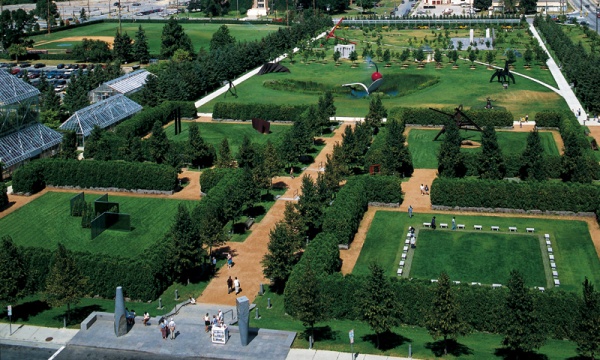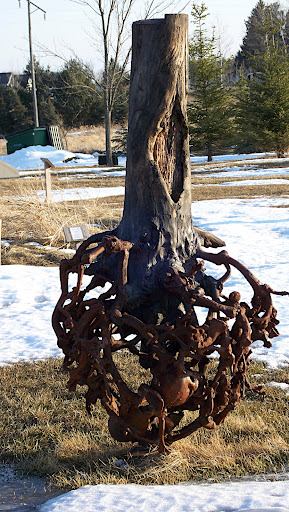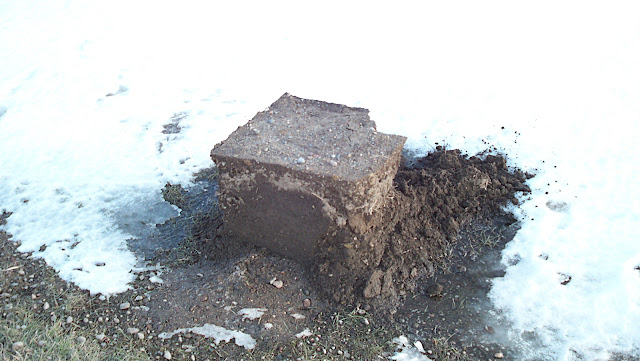Like Public Art, sculpture gardens were created with the intent of connecting different audiences with art. As Harriet Seine says in her article "Urban Sculpture: Cultural
Tolkens or Ornaments to Life?" featured in Art News September of 1979, "Familiarity with art [creates] greater understanding, appreciation, and desire for more [art/engagement]" (112).
The Walker in downtown Minneapolis, decided to create their sculpture garden in 1987 as an effort to reclaim the wasteland area across from their museum. Furthermore, to
establish an engagement with the community, the Walker commissioned the artist
Siah Armajani to construct a 375-foot long bridge (the
Irene Hixon Whitney Bridge across Interstate 94 to connect people from the
Loring Park area directly into the flourishing sculpture garden.

Although sculpture gardens integrate art into the outdoors, it is their formal construction that invalidate the contained sculptures as Land art. The gallery aesthetic of the Walker tends to pervade its sculpture garden. Look at its structure. It looks like the design of the garden echoes that of museum spaces, with courtyards mimicking gallery rooms, spaces designed specially to house certain sculptures.

Pieces like
Arikidea (1977-1982) by Mark
di Suervo are not Land art.
Arikidea is a sculpture because it can be placed inside a museum and the only difference for viewers would be that they would feel less inclined to interact with it. Like public art, there is an aspect of viewer participation, but because it is not site-specific, it is not Land art.
Another place to explore is Franconia Scultpre Park near Taylors Falls in Minnesota. It was designed as a place for artists to play and experiment without having to worry about costs or exhibition space. Here artists have free reign over the land and can use it to display or create
art as they see fit. When visiting, the feel is very different than that of the Walker Sculpture Garden, it is less formal in its organization, in fact sculptural pieces are scattered across the land without any order of presentation. Here there are not only definite pieces of sculpture, but there are also sculptural Land art pieces.

See:

For me, these pieces worked as
Land Art because they utilized and demonstrated qualities of both the industrialized (with paint in 1963 Black Walnut and bronze in Trees have bones for roots) and the natural process of decomposition (of earth in Earthcubes).

 Pieces like Arikidea (1977-1982) by Mark di Suervo are not Land art. Arikidea is a sculpture because it can be placed inside a museum and the only difference for viewers would be that they would feel less inclined to interact with it. Like public art, there is an aspect of viewer participation, but because it is not site-specific, it is not Land art.
Pieces like Arikidea (1977-1982) by Mark di Suervo are not Land art. Arikidea is a sculpture because it can be placed inside a museum and the only difference for viewers would be that they would feel less inclined to interact with it. Like public art, there is an aspect of viewer participation, but because it is not site-specific, it is not Land art.

No comments:
Post a Comment